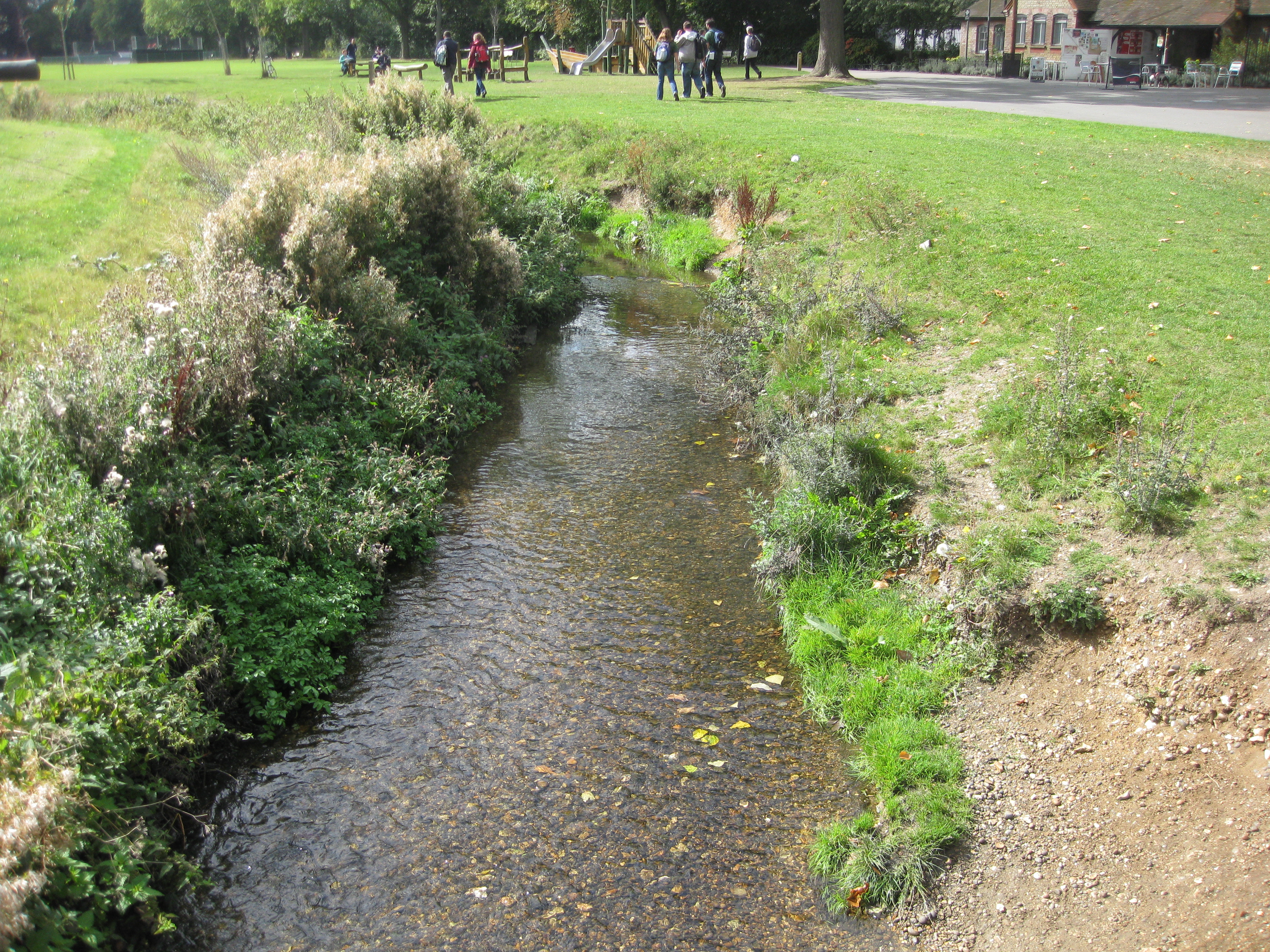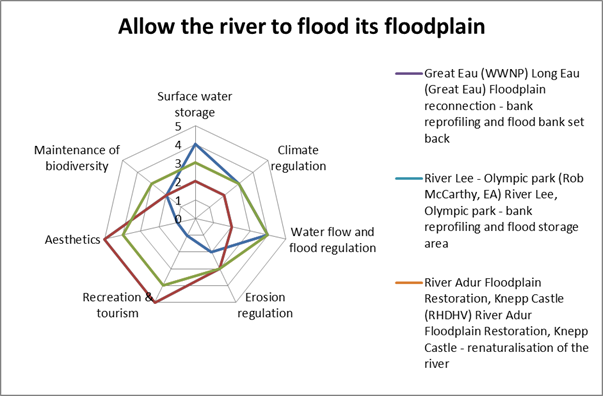 This activity deals with situations where the channel is disconnected from its floodplain (i.e. high, steep, or concrete banks that encourage flow to pass through the system as quickly as possible) and aims at restoring natural channel processes.
This activity deals with situations where the channel is disconnected from its floodplain (i.e. high, steep, or concrete banks that encourage flow to pass through the system as quickly as possible) and aims at restoring natural channel processes.
This activity should be a preferred option for Flood & Coastal Risk Management (Environment Agency) works as it delivers multiple benefits.
Techniques
There are a wide range of techniques that can be used to implement this environmental improvement, depending upon the type and characteristics of the water body in which it is going to be applied. These include:
- River restoration
- Reconnecting old side channels
- Breaching of existing earth bunds
- Improving the operation of flap valves within embankments
- Lowering of flood defences
- Connecting the river to floodplain wetland
- Removing / modifying pumping stations
- Breaching embankments as part of habitat creation projects
Benefits
Allowing a river to flood its floodplain can deliver a wide range of direct and indirect benefits, including:
- Direct benefits to plants, invertebrates, birds and animals which live on the banks, riparian and floodplain zone
- Improvements to in-channel habitats for aquatic plants, fish and invertebrates
- Improvements to the physical habitat conditions of the watercourse, including the creation of a more natural bank profile and more varied habitat niches
- Restoration of natural processes, including erosion and deposition
- Improvements to the aesthetic value of the watercourse and improvements to its recreational value
- Increases the potential for removal of fine silt from river systems – this increase water clarity which in turns benefits ecology
Case Study Benefits
This diagram displays a comparison of benefits scores (using a high-level ecosystem service assessment methodology) associated with the techniques used in each case study. More details on the methodology can be found here.